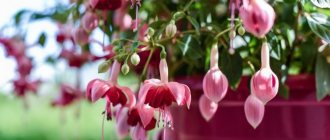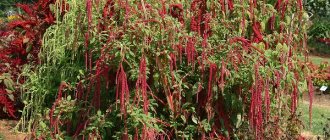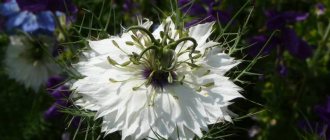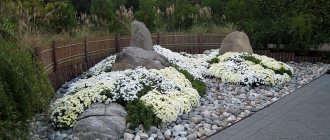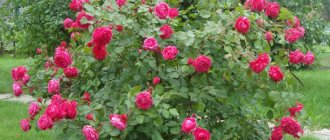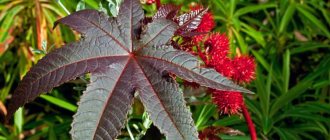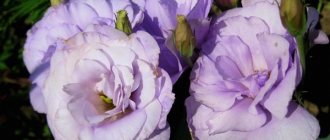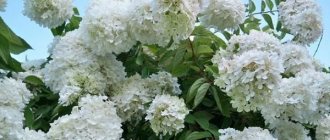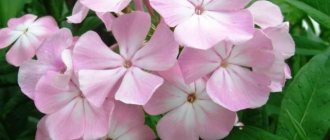Clematis is a perennial climbing plant that is widely used for vertical gardening. The culture is characterized by low maintenance and long flowering. Increased interest in the plant by gardeners has contributed to the development of new species of perennials, distinguished by a variety of shades and increased decorativeness. But for the successful cultivation of clematis and its abundant flowering, proper pruning is very important. Moreover, it must be carried out taking into account the characteristics of each variety. Therefore, it is worth knowing what types of perennials there are and what is the difference between them.
Astra Nova
"Astra Nova" is a completely new variety of clematis with unusual white and purple flowers. Judging by the manufacturer's description, it is completely winter-resistant (USDA 6). However, there are chances that under good cover it will not only survive, but also preserve shoots for rapid growth and timely flowering.
- Trimming group: 3;
- Height: up to 2.5 meters;
- Flowers: medium size, with 6 white-purple sepals;
- Flowering: from July to September;
- Winter hardiness zones: 6-9.
Clematis - the best varieties
Among the variety of varieties, it is difficult to say which are the best. Some people will like early-blooming ones with small flowers, while others want to decorate their garden with large-flowered, autumn species. But there are varieties that are the most frequently purchased and popular among gardeners.
A combination of clematis of different varieties
Description of the clematis variety Ashwa
Clematis Ashwa is a low-growing vine, the height of which is no more than 2 m.
During one growing season, about a hundred buds can appear on the vines of the Ashwa variety. The inflorescences are large, bright and come in a variety of colors. They can be white, pink, purple or crimson.
This is a plant that grows well and blooms luxuriantly only in good light. In the shade, all these processes slow down.
The flowers are large, bright, round. Each has five petals. In the middle of each of them there is a contrasting vertical stripe.
Flowering occurs from early summer and lasts until mid-autumn. They belong to group C, i.e. needs pruning annually.
Description of the clematis variety Nelly Moser
Clematis Nelly Moser is one of the many hybrids. It was developed back in the 19th century in France.
The vines are long, growing up to 3.5 m. They are famous for the formation of a large number of shoots per season. Belongs to clematis of group B, i.e. budding occurs both on new shoots and on last year’s shoots. But last year’s buds appear earlier.
The first flowering occurs in June, the second in July. Until the end of August, flowering is especially lush. Sometimes flowers continue to appear later, but not in a bright carpet, but separately.
A large-flowered variety, the length of the buds is up to 17 cm, and the blooming flowers are 20 cm in diameter with proper care and good weather conditions. One flower has 6-8 ellipsoid petals, sepals 9-12 cm.
The color of the inflorescences is pinkish, almost white, with a bright pink vertical stripe in the middle of each petal.
Important! Since this hybrid belongs to group B, pruning should not be drastic. Otherwise, flowering may not occur next year.
Description of the clematis variety Knyazhik
Liana Knyazhik is a very close relative of clematis, so they belong to one of the groups of clematis - Knyazhik. They can become a real decoration of the garden.
These are perennial vines that can live in one place for up to 15 years. Their stems become lignified, but they cling to the support due to special petioles located on the leaves.
The flowers are bell-shaped, up to 10 cm in diameter. Their colors are rarely bright, more often in calm pinkish or lilac shades. Sometimes they are blue. The height of the vine, depending on the variety, is 2-4 m.
Prince of the Alps
Description of the clematis variety De Boucho
Clematis De Busho is a liana that in nature can reach a height of 4 m, and in central Russia, including the Moscow region, no higher than 3 m.
Description of the variety:
- leaves of complex shape, consisting of five oval leaflets;
- long, up to 20 cm, peduncles;
- flower diameter - 10-15 cm;
- there are many flowers on one vine;
- pink color, sometimes with a lilac tint;
- blooms from July until the first frost.
Important! Plants of this variety cannot be planted in southern areas, where they can get sunburn, as a result of which flowering will not occur at all.
Description of the clematis variety Varshavska Nike
Clematis Warsaw Nike (Warsaw Night) is one of the most striking hybrids, bred by the Polish monk Stefan Franczak. He obtained more than 70 varieties of these flowers, most of which gained popular popularity and became widespread among flower growers.
Description of the variety:
- large-flowered hybrid, flowers up to 17 cm in diameter;
- medium-sized - the length of the vine is 2.5 m;
- pruning group B or C (depending on the region of growth);
- the color of the flower at the base is bright purple, gradually lighter towards the edges, becoming reddish-lilac;
- It is not highly frost-resistant, therefore, to prevent it from being damaged in the cold winter, the plant must be insulated carefully;
- It is characterized by high immunity to fungal and infectious diseases, as well as parasites.
Interesting! The breeder dedicated this variety to the memory of all Polish soldiers who died fighting for their homeland in World War II.
Description of the clematis variety Hegley Hybrid
Clematis Hagley Hybrid was bred in England in the mid-twentieth century. Its main feature is its incredibly beautiful flowers.
Variety Haigley Hybrid
Description of this plant:
- slow growth, medium-sized vines, reaching only 3 m in height;
- flowering is lush, begins in July and ends in the second half of September;
- the flowers are large, up to 18 cm in diameter, with corrugated edges;
- the color is pinkish-lilac, with a pearlescent tint;
- trimming group C.
Important! Hegley Hybrid needs constant support; without it, the decorative effect of clematis is lost.
Description of the clematis variety Westerplatte
Clematis Westerplatte is a perennial deciduous vine, characterized by an average growth rate of stems, but eventually growing above 3 m.
A very decorative plant, which within 3-4 years forms a bright carpet of amazing large flowers and lush green leaves. The stems are quite pliable, so they can easily grow in a given direction.
The flowers are bright garnet color, reaching 16 cm in diameter. Pruning group B. Very strong frost resistance. They can withstand even the most severe frosts, down to -35°C, without insulation.
They bloom in July-August. Pruning of stems sticking out to the sides can be done throughout the summer, and the second, pre-winter pruning is done before preparing for winter (the specific timing depends on the region). The shoots are cut off, but not completely; parts of seedlings of 50-100 m are left.
Clematis Westerplatte
In addition to those listed, such varieties as Ballerina, Rubens, clematis Ernest Markham, clematis Jacquemman, clematis Tunguska and some others are also popular.
Landing rules
The main requirements for planting clematis "Ashwa" are an abundance of sunlight and the absence of drafts. When purchasing seedlings, it is better to give preference to material of Dutch selection, since, according to numerous reviews, they are the most resistant and capable of quickly adapting to a new place. Before immediate planting, it is recommended to store the material in a room where the temperature is from 0 to +2 degrees Celsius. In the case when the culture has already woken up, good lighting is added to the above requirements. Material purchased in the fall can only wait until spring if it is kept in a basement with a temperature of five degrees. The exposed root must be covered with a slightly moistened mixture of sand and sawdust. The shoots that actively develop in the winter months must be pinched.
In terms of acidity level, the soil mixture can be either neutral or slightly alkaline. It is better to test for acidity in the fall, since acidic soil can be deoxidized before spring using one of the common methods. Already in the spring the soil should be fertilized.
Having formed a hole, the top layer of soil will need to be mixed with a bucket of peat, the same amount of sand, 2.5 buckets of compost and 100 grams of bone meal. It is also recommended to enrich the soil with ash, chalk and complex fertilizers, taken in an amount of 200 grams. Planting clematis starts in the last week of May, when the danger of returning frost has passed and the soil has warmed up sufficiently. The size of the pit is 60 centimeters in length and width, and the depth is determined depending on the dimensions of the seedling itself. A layer of drainage or perlite must be formed at the bottom.
The soil is cleared of weeds and dug up with fertilizers, after which it is left for a couple of days under cellophane for the required settling. The seedling is well watered or kept in water for several hours, depending on whether the root system is closed or open. It is located in the hole in such a way that the root collar is deepened by about 7–10 centimeters. This gap, by the way, is reduced to 4 centimeters in the case of heavy soil. If several specimens are planted at the same time, then between the bushes should be kept from 60 centimeters to 1 meter, according to the possibilities of free territory.
The support for Ashwa is installed immediately. It is necessary to choose a strong and reliable structure, burying it quite deeply. After planting, clematis is irrigated, and the tree trunk circle must be mulched. For the first two weeks, it is recommended to protect the plant from strong sun.
Buying and planting Ashwa
According to its intended purpose, clematis Ashwa is suitable not only for vertical, but also for ground cover landscaping of an area.
But for the plant you need to choose the right growing conditions. The fact is that this is a light-loving culture. In the shade it will bloom very small and reluctantly.
It is also important that the area is protected from the wind. Strong drafts confuse plant shoots and break delicate petals
Purchase of planting material
Most stores offer seedlings of Dutch selection. Judging by the reviews, they are the strongest and most durable.
If you bought a seedling too early, put it in a cellar or utility room, where the temperature is kept from +2 to 0 degrees. If Ashva nevertheless wakes up and her buds are swollen, move the seedling to a lighted (but also cold) place - the light will help the sprouts not to stretch out.
Was the seedling purchased in the fall? Keep it in the basement all winter at +5 degrees. If the root is open, cover it with sand and sawdust. This mixture should be slightly damp. Check how the seedling is doing once or twice a month. If the shoots start to grow, pinch them off immediately.
Site preparation
Ashve “to taste” fertile loamy soil
It is important that it is loose - in heavy (and because of this constantly damp) soil, the bush can hurt
Before planting, check the acidity of the area. The reaction must be neutral or slightly alkaline. If the soil is acidic, deoxidize it first.
Important! It is better to check it in the fall, since many deoxidation methods take a long time to act. It is advisable to fertilize the soil
When you dig a planting hole, mix the top layer of soil with: 2.5 buckets of compost, a bucket of peat, a bucket of sand, 100 g of bone meal. It is also advisable to add 200 g of ash, chalk and complex flower “mineral water” here. All these substances will enrich the earth, fluff it up, and further deoxidize it.
It is advisable to fertilize the soil. When you dig a planting hole, mix the top layer of soil with: 2.5 buckets of compost, a bucket of peat, a bucket of sand, 100 g of bone meal. It is also advisable to add 200 g of ash, chalk and complex flower “mineral water” here. All these substances will enrich the soil, fluff it up, and further deoxidize it.
Disembarkation step by step
- Start work at the end of May. At this time, the soil has long warmed up, and the spring winds have had time to “blow out” the cold, so the danger of return frosts is minimal.
- Planting pit size: 60x60.
- Place a little perlite or sand at the bottom (drainage). Dig up the soil with fertilizers. Cover this pile with cellophane and leave it in the garden for a couple of days - the soil should settle a little.
- A seedling with an open root system is placed in a bucket for several hours. The seedling in the container needs to be watered well, or place the entire container in a bowl of water. After 20 minutes it can be removed.
- The root collar is buried 7-10 cm. If the soil is heavy, deepen it only 4 cm.
- When planting in groups, the distance between the bushes should be about a meter (but if there is little space, 60 cm will be enough). This also applies to the plant’s proximity to the house and other buildings: Ashva’s roots need a little space, and the soil near the wall itself is always dry. Therefore, there should be 20-30 cm from the bush to the buildings.
- Immediately upon landing, install the support. It is worth choosing a strong one and digging it deep - if someone snags the support and drops it with the “wound” flowering clematis, most of the flowers will be worn out.
- After planting, Ashwa is watered and the soil is mulched. In the first 2 weeks, the seedling should be shaded from strong sun.
You should not expect that Ashwa will bloom very luxuriantly in the first year after planting. The bush will immediately devote all its strength to rooting, and the peak of its beauty will begin from the 3rd year.
Clematis: small-flowered, white varieties
Clematis - planting and care in open ground for beginners
Growing small-flowered clematis is not yet common among Russian gardeners, but is already gaining popularity.
Important! Planting and caring for these varieties is simple and accessible even to beginners.
Description of the White Cloud variety
Clematis White Cloud also has a second, more common name - Clematis Burning. He got it because of his roots, which secrete an acrid, burning juice. You should avoid getting it on the mucous membranes, otherwise burning and redness may occur. However, it does not pose a strong danger, so it is quite possible to grow it in your garden plots.
Main characteristics of the variety:
- looks similar to wild varieties, such as mountain clematis or yellow clematis;
- small-flowered, flowers 3-4 cm in diameter;
- flowering is lush, abundant;
- on one liana 200-400 small white flowers are formed, collected in panicle inflorescences;
- the smell is bright, with an almond flavor, which attracts pollinating insects;
- Flowering period: from early July to early September;
- The height of the vine reaches 5 m, but there are also compact varieties, up to 1.5 m, which, if desired, can be grown on open verandas or balconies.
Variety White Cloud
Description of the clematis variety Hakuree
The clematis variety Hakuree is a perennial, bushy variety developed in Japan.
The height of the bush reaches 1 m. Flowering group C. The shoots are not vines (like most), so they do not cling to the support. Need a garter.
The flowers are small (3-4 cm in diameter), white, with a lilac center, shaped like bells. It blooms for a long time, from June to September. Has a pleasant light scent.
Landing rules
Clematis are fairly unpretentious plants, but they also require a special approach to rooting in open ground. This is primarily due to the fact that a flowering crop can delight the gardener with its flowering in one place for quite a long time, so no mistakes should be made during planting that could adversely affect the crop in the future.
Experienced gardeners recommend preparing a place for planting a young plant 2-3 weeks in advance. To do this, you should dig a hole, the dimensions of which should be at least 60x60 centimeters. It is best to root clematis in a special substrate consisting of sand, humus, garden soil and dolomite flour with superphosphate. The seedling is placed in a hole with a third of the volume of the prepared substrate at the bottom, the root system is straightened, and then covered with the remaining soil.
When planting, it is important to pay attention to the level of deepening of the root collar into the soil. If clematis “Comtesse de Boucho” is planned to be grown in a mild climate, then it should be deepened no more than 10 centimeters; for regions with a harsh climate, it is not recommended to deepen the seedling too much. In this case, it is best to additionally cover the soil near the plant with a layer of mulch.
In this case, it is best to additionally cover the soil near the plant with a layer of mulch.
Another important nuance regarding planting flowering vines is the installation of supports for shoots, which stand out for their impressive size and can therefore easily be damaged by their own weight. Supports for flowers are placed in advance at a selected location near the hole. Immediately after rooting, it is best to tie up the flower; further fastening of the crop to the supports will occur independently.
As for where to grow clematis in the garden, there are some useful tips on this matter.
- In order for the crop to bloom profusely, it is best to arrange flower beds with such crops in places not deprived of natural light. Options with flower beds in partial shade will also be suitable.
- The place must be reliably protected from drafts and gusts of wind, since the vine may suffer from such conditions.
- Despite the fact that the culture belongs to the moisture-loving group, the presence of nearby groundwater can negatively affect the condition of clematis. If another location cannot be found, it would be best to make an artificial hill for clematis, the height of which will be at least 15 centimeters.
- Do not plant the crop too close to a fence or wall of the house. The distance from the fence should be at least 50 centimeters; you should also avoid close proximity to structures so that rainwater does not flow onto the flowerbed.
- The optimal time for planting will be late spring or early autumn. The first option will be the most preferable, since it will allow the culture to quickly adapt to new conditions. Planting material with a closed root system can be rooted in open ground even in the summer months.
What you need to know about clematis belonging to pruning group 3
When choosing seedlings of an ornamental plant, you need to pay special attention not only to external characteristics, frost resistance, description of the variety, but also to know the pruning group. The third group is suitable for the central part of Russia. In this case, the plant is cut off completely.
Due to this procedure, more and more shoots appear on clematis every year, and the root system develops intensively. Sometimes you even have to thin out the bushes. If a bunch of shoots gathers in the center, they prevent each other from developing, creating a shadow. In the sun, clematis grow more slowly, but bloom more abundantly.
The young bush is completely pruned in the year of planting, so it will better take root and overwinter. In plants of this group, pruning shoots leaves only 2–3 buds. It is advisable to plan the time of the procedure for mid-autumn in order to be in time before frost.
Important! Considering that flowers appear on young vines, there is no point in leaving old vines.
Over time, the bush grows and looks untidy. Therefore, in the spring the shoots are removed. The cutting scheme is as follows:
- the vines that had inflorescences last year are removed, leaving the lower 2 buds;
- diseased, frozen, two- and three-year-old shoots are pruned;
- new growth that appeared last year, but did not bloom, should not be touched.
Aftercare
Watering
In the absence of drought, the plant needs weekly watering with a small amount of water. Do not overdo it with the portion - overwatering is dangerous for the crop. It is recommended to carry out the procedure in the morning, then during the day all the moisture will be absorbed and in the evening it will be possible to mulch the soil around the seedling. During drought, water the plant 2-3 times a week.
Top dressing
The very first fertilizer for the presented variety can be organic fertilizer. Bird droppings or mullein are suitable as additional nutrition - 1 liter of these ingredients is diluted in a bucket of water and the flower is watered with the resulting solution.
As a mineral supplement, you can use 60 g of products containing potassium and phosphorus. After flowering, the last fertilizer is applied - potassium-phosphorus complexes are again allowed.
Aftercare
There are a number of mandatory measures that relate to the care of clematis.
Watering
Such plants respond positively to frequent watering; in addition, lack of moisture negatively affects the abundance of flowering, as well as the size of the buds. The optimal frequency of watering will be 3 times a week; in the flowering phase, you can slightly reduce the volume of liquid introduced. Not only the root system needs moisture, but also the shoots with green mass.
Feeding
In the first season after planting, there is no need to additionally fertilize clematis. As a rule, fertilizing begins already in the next season. Organic compounds and mineral complexes are usually used. Fertilizing is applied 1-2 times a month throughout the summer. Nitrogen supplements are recommended to be applied closer to autumn.
Mulching
It is best to place a layer of mulch around each plant. It is best to use organic materials that can protect the root system of the crop from the sun and heat, which adversely affect the viability of the underground part of the plant.
Planting in open ground
The clematis variety Nellie Moser is valued for its high decorative value: this vine quickly produces young shoots that entwine any building or support, creating unique flower arrangements for decorating the garden.
Naturally, in order to enjoy the flowering of this crop, you need to follow certain planting rules:
- Selecting a location: this variety of clematis is excellent for creating flowering hedges. But in order for the plants to develop normally and not crowd each other, it is better to plant them with an interval of at least one meter. The landing site also plays an important role. In order for the vine to receive a sufficient amount of light, but not to overheat, it is advisable to place it on the eastern side of the site. In this case, in the first half of the day the plant will be illuminated by the sun, and in the hot afternoon it will be in the shade. In addition, it is advisable to select an area protected from the winds, since fragile shoots can be damaged by a draft or strong gust of wind
- Soil moisture: in addition to overheating, the root system of clematis Nelly Moser is also sensitive to excessive soil moisture. Given this feature, it is not advisable to plant the vine in lowlands where water or snow will accumulate. For the same reason, you cannot plant the vine directly near the roof slope, since excessive rainwater can cause rotting of the rhizome.
- Pick-up time: determined by your region of residence. In the northern and central regions, spring planting is mainly practiced: seedlings are transferred to open ground in late April or early May. In the southern regions, planting is best done in the fall, namely in early October, since it is during this period that young plants begin to actively develop their root system.
- Suitable soil: Soil composition also plays an important role in the successful cultivation of Nelly Moser clematis. This variety grows best on fertile loamy or sandy loam soils rich in humus. It is highly desirable that the soil be loose and have a low level of acidity. If your site is dominated by poor soil, to plant clematis you will have to prepare a special nutrient substrate from 2-3 buckets of compost or humus, 2 buckets of peat, 1 bucket of sand, 100 grams of superphosphate, 200 grams of complex fertilizer and 0.5 liters of wood ash. This mixture is placed in the planting hole about a month before planting so that the soil mixture has time to settle. A 15-centimeter layer of drainage (pebbles, gravel or broken bricks) must be laid at the bottom of the planting hole, which will drain excess moisture from the roots.
For clematis, including the Nelly Moser variety, there is a specific planting algorithm. A small depression is made in the center of the hole into which the root system of the seedling will be placed.
At the same time, it is important to maintain the optimal planting depth: the root collar should not be allowed to be deeper into the soil by more than 10-15 cm (Figure 3). This will not slow down the development of the vine, as when planting at great depths, and will simultaneously contribute to the formation of a strong root system with the further growth of abundant green mass
In addition, if the optimal planting depth is observed, the root system will be protected from overheating, excess humidity and frost.
Figure 3. Proper planting of the vine
Next, a small mound of soil is formed in the center of the planting hole, in which you can freely spread the root system of the seedling to the sides and down. After this, the roots are well watered, and the bush itself is partially sprinkled with sand, after which the rest of the nutrient soil is added, and the soil around the rhizome is thoroughly compacted.
Next to the clematis, you must install a strong support to which the flexible shoots will cling. The structure must be made of wood, metal, PVC pipes or other similar material. Wire, rope or thread are not suitable for this purpose, as they will not be able to withstand strong gusts of wind.
Why is small-flowered clematis popular, the pros and cons of flower culture
What makes this plant popular:
- the vine does not require much time to care for;
- the variety is resistant to sub-zero temperatures and can withstand even harsh winters;
- despite the small flowers, it looks luxurious.
Disadvantages include a weak ability to adapt to hot climates. First of all, the root system suffers. Gradually the plant fades and loses its decorative properties. To save the root system from the heat, the soil under the plant is sown with small plants. Preferably annuals. The scorching rays of the sun do not penetrate the green cover.
